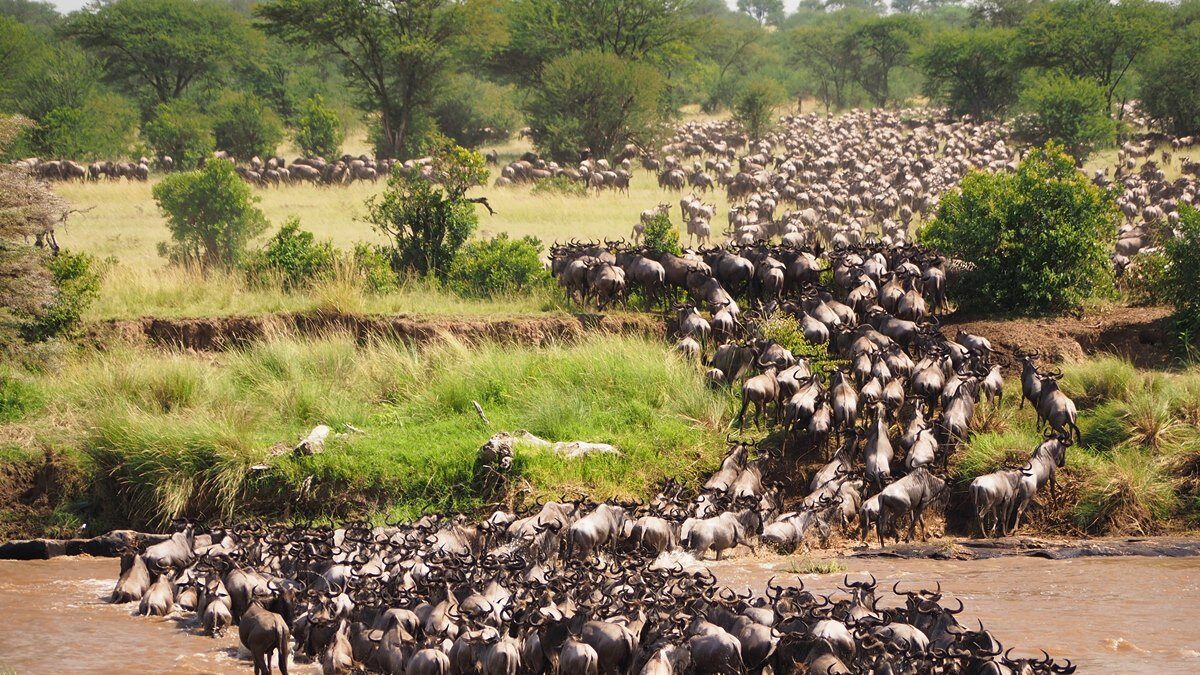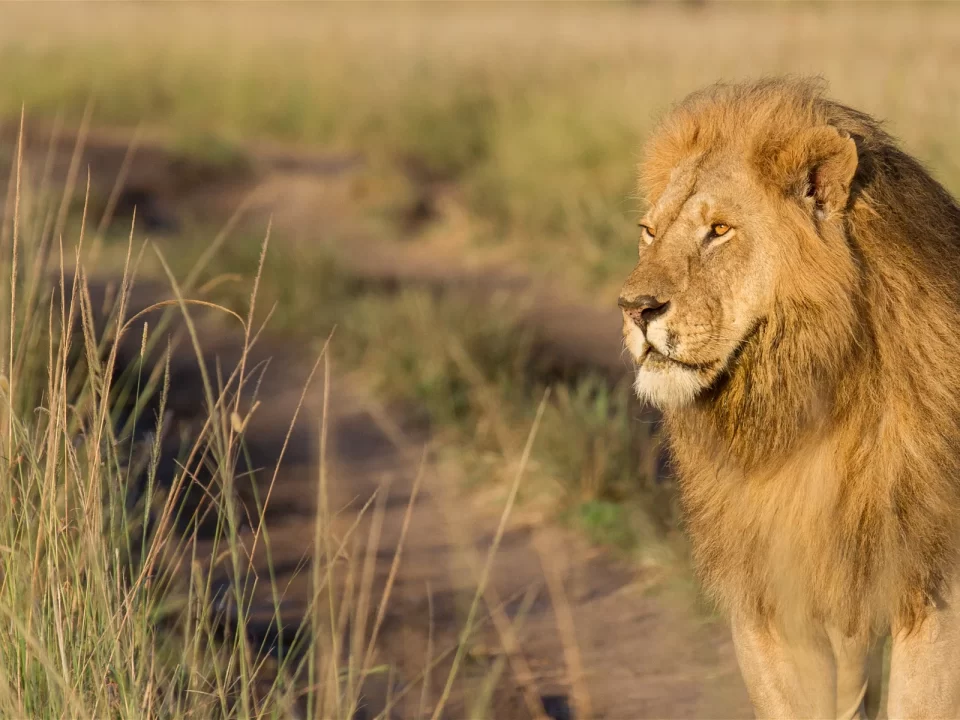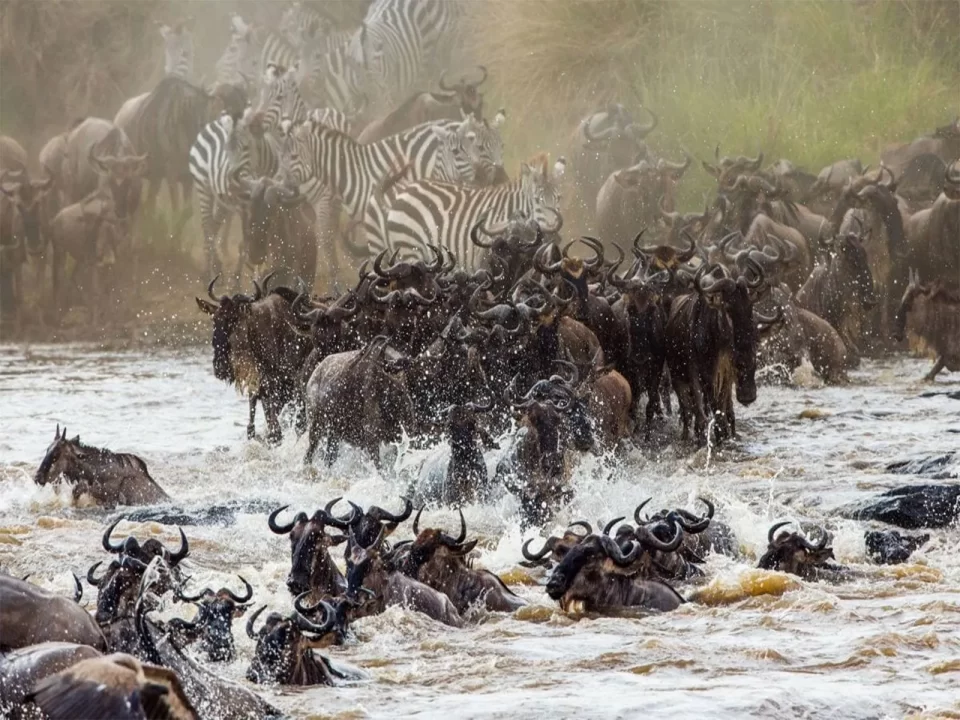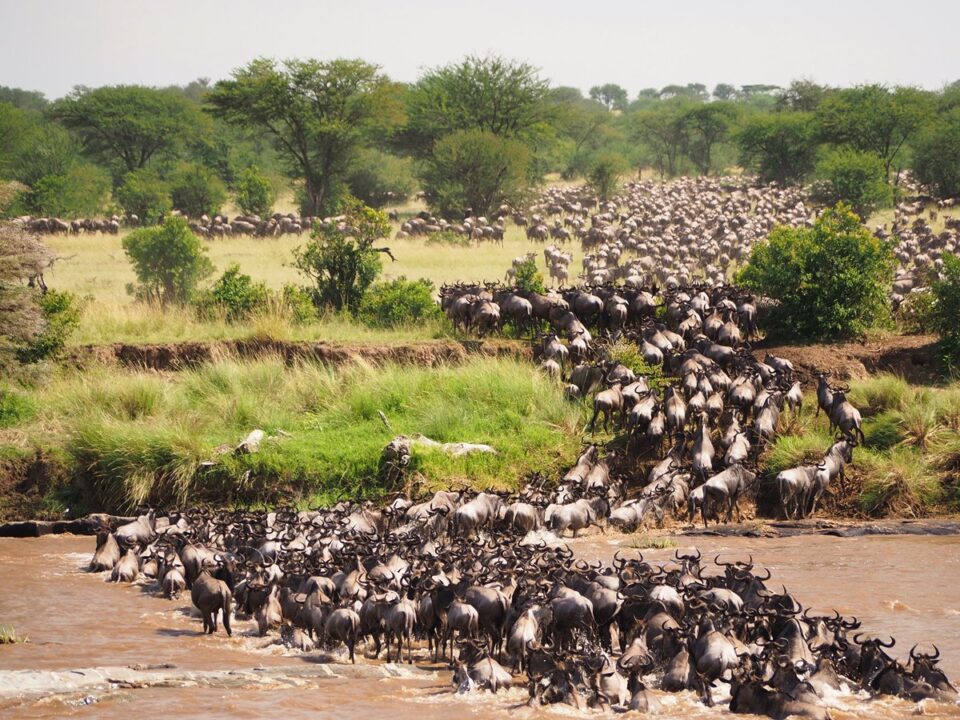Masai Mara Wildebeest Migration Safari

Visit the Giraffe Centre in Nairobi Kenya
February 21, 2024
Is it Safe for a Safari in Kenya?
February 21, 2024Masai Mara Wildebeest Migration Safari – Kenya Wildlife Safaris and Tours
Embark on a mesmerizing journey to witness the Great Wildebeest Migration in the vast plains of East Africa – a spectacle that stands as one of the world’s most thrilling, intriguing, and spectacular displays of wildlife behavior. Trek Africa Expeditions prioritizes optimal timing, ensuring its travelers secure the best front-row seats to observe this awe-inspiring event. Leveraging personal knowledge, local experience, and expertise in the Great Migration within the Masai-Mara National Reserve, Trek Africa Expeditions ensures a memorable African safari experience amid Kenya’s pristine wilderness.
Masai-Mara, renowned for its Mara River crossings, is a focal point for wildebeest migration enthusiasts. However, it’s essential to dispel misconceptions as the migration is an ongoing movement occurring throughout the year.
The migration unfolds within the “Serengeti ecosystem,” spanning a vast 40,000-square mile area, bordered by Masai-Mara National Reserve in the north and Ndutu, Ngorongoro Conservation Area, and Maswa Game Reserve in Tanzania to the south. The migration encompasses Grumeti Reserve, Loliondo, the official Serengeti National Park, and other protected areas. Rather than a singular event, the Great Migration signifies the continuous movement of over 1.5 million wildebeests, accompanied by hundreds of thousands of zebras, elands, and gazelles. Motivated by the search for pasture and water, this perpetual migration responds to the fluctuating availability of essential resources.
Unique Features of the Great Wildebeest Migration
The significance of the Great Wildebeest Migration from Serengeti National Park distinguishes it due to the massive size of the herds. While the precise mechanisms guiding the animals’ knowledge of food and water sources remain mysterious, researchers propose hypotheses tied to weather patterns and the cyclical nature of rainy and dry seasons. Unpredictable rainfall and weather conditions make it challenging to pinpoint the animals’ locations throughout the year. Reliable insights into their movement emerge by studying historical data from past migration years.
Trek Africa Expeditions collaborates closely with strategic camps and lodges in Masai-Mara and Serengeti, ensuring guests enjoy a high-quality African plains safari experience. This is particularly appealing to those seeking personalized views of the diverse facets of the migration.
Highlights of the Migration and Mara River Crossing
Among the most anticipated events during the migration is the Mara River crossing, unfolding between late July and August, with additional occurrences in September. The return journey south takes place from the last two weeks of October through early November. These periods offer optimal opportunities to track and witness the annual wildebeest migration in Masai-Mara.
Documentary films from prominent entities like the BBC and National Geographic capture the Mara River crossing, yet nothing rivals the on-site experience. The spectacle unfolds as masses of wildebeests gather on river ledges, conveying a palpable mix of urgency and hesitation. The energy in the air is tangible as wildebeests appear to gather courage, occasionally dispersing across the savannah to graze.
The Mara River crossing involves a series of nerve-wracking moments, with wildebeests standing above the river, eyes wide, each animal strategically positioning itself for the safest path. The anticipation builds, and when the decisive moment arrives, a surge of animals rushes toward the water, accompanied by zebras, elands, and gazelles. As excitement turns to fear, the awareness of lurking crocodiles adds to the intensity. The crossing unfolds with a mix of awe, anticipation, heartache, inspiration, and excitement, providing a profound connection with the natural world.
While some animals successfully navigate the river, challenges arise from predators such as lions, leopards, cheetahs, and hyenas awaiting easy prey on the riverbanks. The heartbreak becomes evident as younger calves, tired and inexperienced, struggle to survive.
For those that triumphantly reach the greater plains of Masai-Mara, a period of relative ease follows. However, the inevitable decline in pasture and water resources prompts the herds to resume their ongoing journey. The Mara River crossing repeats as the wildebeests, zebras, gazelles, and elands navigate the challenges, symbolizing the perpetual cycle of life in the Serengeti ecosystem.
As the rains return to other regions within the ecosystem, the migratory journey continues, with these resilient creatures traversing the Northern and Eastern Serengeti by mid-October through early November.
For an immersive and unforgettable experience of the Masai Mara wildebeest migration safari, combined with gorilla tracking safaris in Uganda and Rwanda, contact Trek Africa Expeditions. Elevate your safari adventure with expert guidance and personalized insights into the wonders of East Africa’s wildlife and landscapes.




